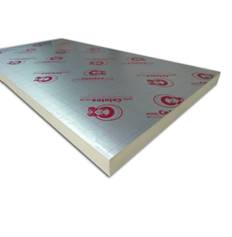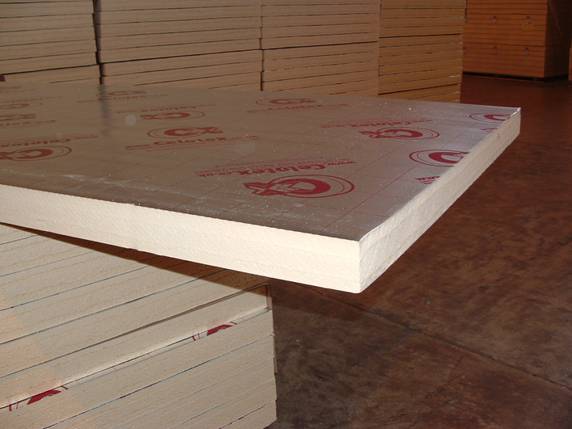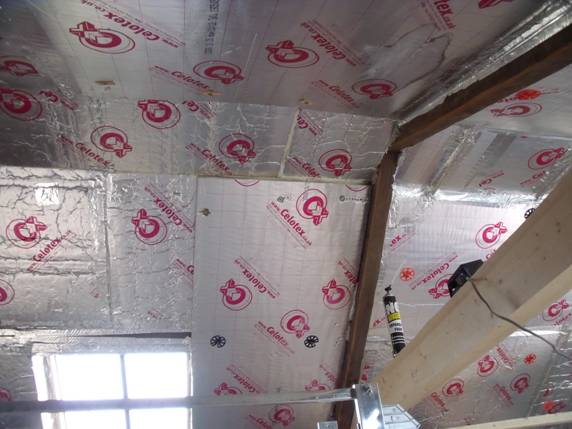Roof Insulation with Celotex GA 4000 Insulation Board

Pitched and Flat Roof Insulation Solutions
 Proper roof insulation should be ranked high on your list of priorities, so if you are planning on building a home or reconstructing and upgrading the existing one, now is the perfect time to consider insulating your roof. Namely, regardless of whether you are having (or planning on constructing) a flat or a pitched roof, both require adequate protection, simply due to the fact that conducted studies have shown that a vast amount of heat is lost through a poorly insulated roof. Another valuable fact that should also be considered is that it is not uncommon nowadays for people to convert their empty and unused loft space into a living space, which should never be done without insulation installed. There are many solutions for roof insulation, so we are here to suggest one why we offer a Celotex GA 4000 guide for your pitched and flat roof insulation.
Proper roof insulation should be ranked high on your list of priorities, so if you are planning on building a home or reconstructing and upgrading the existing one, now is the perfect time to consider insulating your roof. Namely, regardless of whether you are having (or planning on constructing) a flat or a pitched roof, both require adequate protection, simply due to the fact that conducted studies have shown that a vast amount of heat is lost through a poorly insulated roof. Another valuable fact that should also be considered is that it is not uncommon nowadays for people to convert their empty and unused loft space into a living space, which should never be done without insulation installed. There are many solutions for roof insulation, so we are here to suggest one why we offer a Celotex GA 4000 guide for your pitched and flat roof insulation.
Celotex GA 4000 Characteristics and Advantages
Prior to undertaking your insulation project, you need to be aware of some basic characteristics and advantages of Celotex GA 4000 PIR insulation boards. They are very versatile since they can be used in various insulation applications, including roofs, walls and roofs, since highly efficient, easy to install and available in a number of different thicknesses ranging from 50mm to 100mm, why they can meet different requirements. It is consisted of a rigid PIR core covered with low emissivity foil facings, for improved performance. No harmful blowing agents were used in the manufacturing process which makes the boards extremely eco-friendly and sustainable. Due to its low thermal conductivity (of 0.022 W/mK), it enables great thermal performance with only one layer of insulation, though it can also be used as a part of an insulation system, upgraded with some other insulation solutions. It comes in standard size of 1200mm x 2400mm, with grid markings which make the installation process even easier.
Before moving onto Celotex GA 4000 roof installation, one should make sure that the boards are stored in dry conditions, and if stored under tarpaulins, additional protection from damage must be ensured. When cutting the boards so they suit the specific application, make sure to use adequate face masks and eye protection, alongside proper equipment, including dust extraction tools. Since edges of the boards can be sharp, make sure not to slide bear hands over the edges.

Celotex GA 4000 in Roof Insulation
The upper mentioned advantages probably persuaded you that GA 4000 boards are the best solution for your roof insulation, why we shall move on to the installation process in both pitched and flat roofs.
Pitched roof sarking
Celotex insulation boards offer a thinner, single layer solution and create a highly efficient warm roof construction.
Before commencing the installation, please keep in mind that specific fixing instructions may depend on specific requirements, such as the location and dimensions of the roof. The first step involves installing timber battens across the rafters, whereas the stop battens installed should correspond to the size of the boards, since they are butted directly against these battens. When installing the boards, their edges need to be supported by the rafters, and their longer sides parallel to the rafter lines. In words of thermal regulation, it is best that the unprinted side of the boards to be placed face adjacent air cavities. Since the joists need to be closely butted, use adequate saw to cut the boards to splay and rake at verges and the ridge. The boards should be temporarily fixed with some large headed nails.
Then install counter battens of minimum 38mm x 50mm over the boards and nail it directly to the stop batten. Use stainless steel helical spike fixings whose length should correspond to the sum of insulation thickness, depth of rafter penetration and depth of the counter batten. These should be fixed at maximum 400mm centres and the holes in the counter batten pre-drilled in order of minimizing the risk of splitting the timber. A breather membrane should be draped over the counter battens and secured with tile battens, which are fixed to the counter battens at an adequate gauge, depending on the selected tiles or slates. A vapour control layer is also necessary and should be installed to the rafters’ underside. Finally, some sheet material such as plasterboard should be fixed to the rafters. Note that when the rafters are exposed, you can alternatively fix the plasterboard directly over the rafters before installing the insulation, where a vapour control layer should be fixed directly onto the plasterboard.

Between and over the roof rafters
Celotex GA 4000 PIR boards are ideal to be used between and over the rafters, since these can create a habitable under roof space and are especially applicable whenever headroom is limited, with no water tanks and pipes insulation required.
When installing the boards over the rafters, install timber battens across the rafters, whereas the stop battens installed should correspond to the size of the boards, since they are butted directly against these battens. When installing the boards, their edges need to be supported by the rafters. Since the joists need to be closely butted, use adequate saw to cut the boards to splay and rake at verges and the ridge. The boards should be temporarily fixed with some large headed nails.
A breather membrane needs to be installed over the insulation material. Then install counter battens of minimum 38mm x 50mm over the breather membrane and nail it directly to the stop batten. Use adequate fixings whose length should correspond to the sum of insulation thickness, depth of rafter penetration and depth of the counter batten and fix them at maximum 400mm centres. The holes in the counter batten should be pre-drilled in order of minimizing the risk of splitting the timber. Finally, fix the tile battens to the counter battens at an adequate gauge, depending on the selected tiles or slates.
When insulating between rafters with the GA 4000 PIR board, the following guidelines apply. Prior to cutting the boards, you need to measure the width between the inside face of the rafters. In order of ensuring a friction fit, cut the boards at an angle so that the board width is lightly oversized on one surface. The board is then pushed between the rafters so that it lays tight against the insulation layer. The boards can be held in place with battens along the rafters’ side. The insulation should be fit to the ridge plate and wall plates butted at eaves. A vapour control layer should be installed to the rafters’ underside. Finally, add some finish such as plasterboard fixed to the rafters.
Flat roof – between and under joists
Celotex GA 4000 can be used for creating ventilated cold roof construction and is best combined with Celotex PL 4000 plasterboard, which will drastically decrease the installation time and provide flexibility due to the tapered edge plasterboard.
It is important to leave at least 50mm of ventilated airspace above the Celotex GA 4000 insulation boards, so take this into account when you determine the joist depth. The battens should be fixed to the inside of the joists, whereas the bottom of the battens should be approximately 50mm below the decking. Prior to cutting the boards, you need to measure the width between the inside face of the joists. You can choose specially designed clips that are fit at one metre maximum centres and require no additional fixings. Then, the Celotex PL 4000 plasterboard is secured to the underside of the joists. Finally, in order of creating a vapour control layer, all joints between the boards need to be properly taped and jointed.
Find out more about the Ga 4000 Insulation Board and the various roof insulation systems we offer by reading product specifications and descriptions on our website. Get a free quote for your insulation project and a fast delivery by placing your order online with Insulation Shop. For any additional information contact us through our live chat support system or send us an email to info@insulationshop.co.











































































































